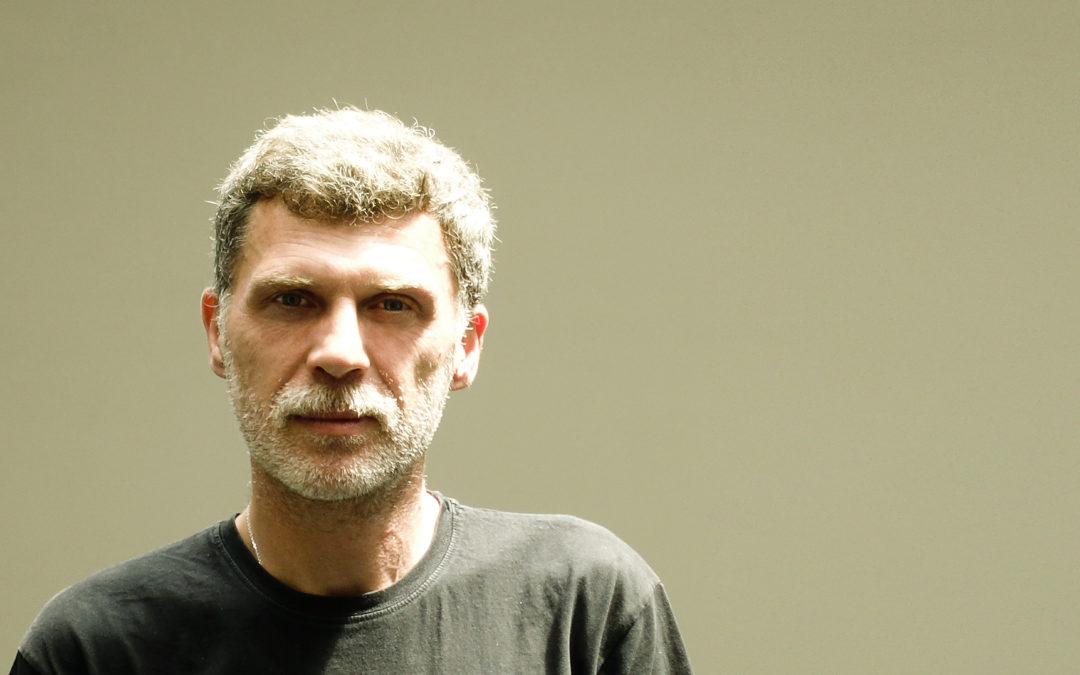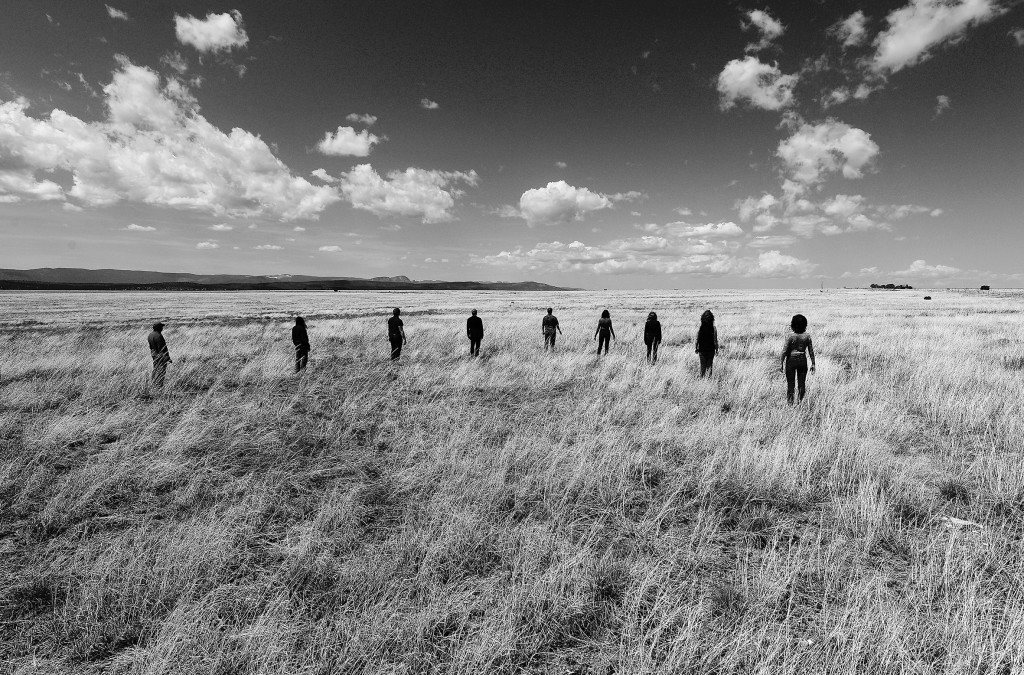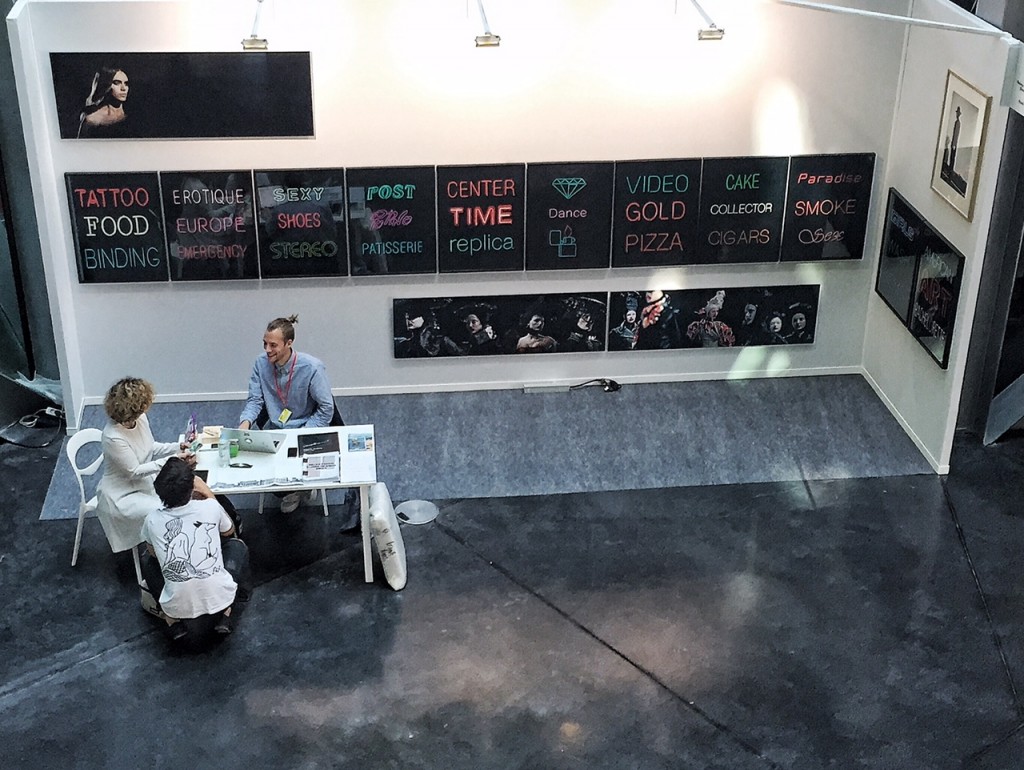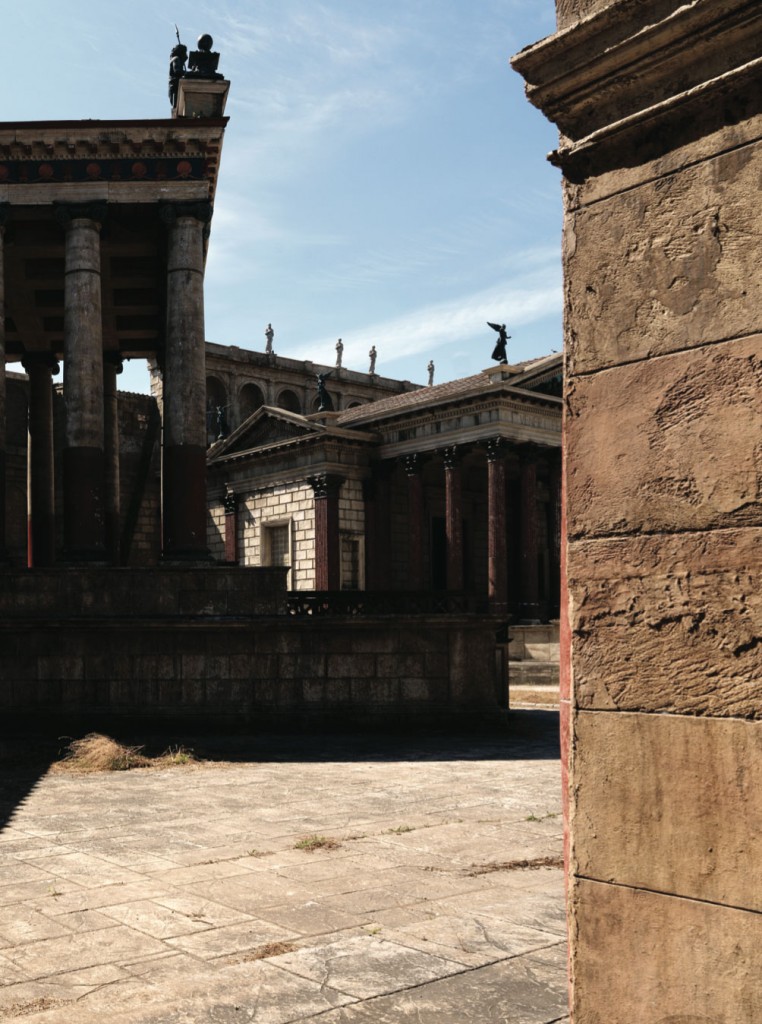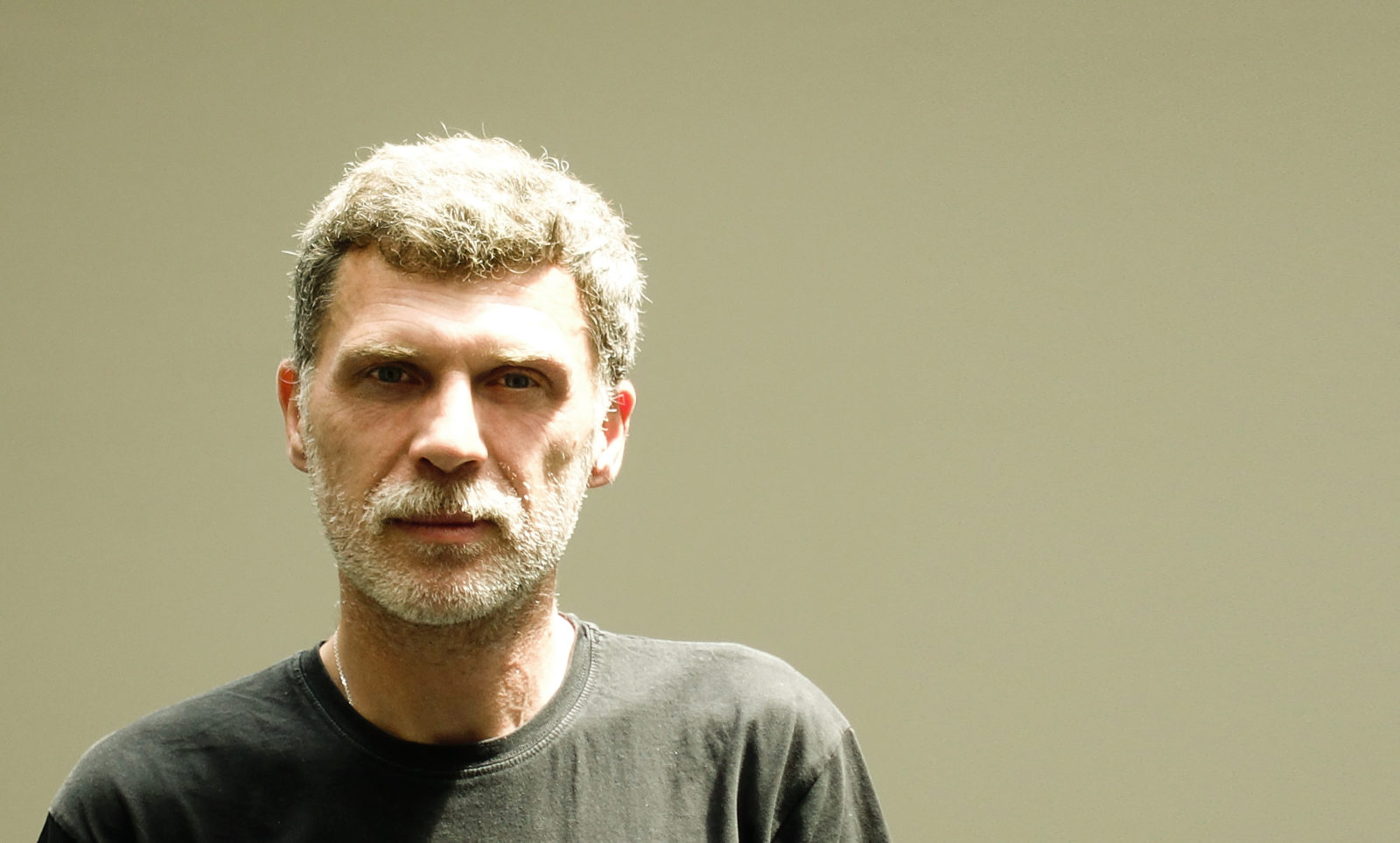
Photo by Frank Perrin.
A MEETING BETWEEN BRICE DELLSPERGER & FRANK PERRIN
By Frank Perrin
Rediscover our meeting with Brice Dellsperger on the occasion of the opening of his new exhibition « Solitaires » tomorrow at Air de Paris. This interview was published in Crash #89.
A singular artist who places the body and its many mutations at the center of his work, Brice Dellsperger began making his Body Doubles series in the 1990s: remakes of scenes taken from cult classics – or B movies – which he appropriates for his own purposes. While duplicating actors, personalities, scenes and genres, Dellsperger employs cross-dressing to question human gender and film genre, both more fluid than they may seem. We caught up with him for the release of Body Double 36, subtitled Fucking Perfect and shot in the Galerie Carrée at Villa Arson in Nice. A “retake” of James Bridges’ 1985 film Perfect, the video installation transforms a scene from 80s aerobics classes into a kaleidoscopic hallucination complete with mirrors that stretch to infinity. At the same time, Dellsperger is exhibiting all the prep materials for his shoots at La Station in Nice, inviting viewers to step behind the camera for a sneak peek into his unpredictable mind.
Frank Perrin: Tell me about your project for Villa Arson in Nice.
Brice Dellsperger: Éric Mangion, the director of the villa, came to see me because he wanted to offer me a project and I had an idea in mind, a film project which had been on standby while I was waiting for the means to produce it. I thought it would be nice to shoot in the Galerie Carrée because it looks like an aerobics room. I thought it was cool to transform an exhibition hall into an aerobics classroom. Eric liked the idea, especially after I showed him a scene from the 1985 film Perfect. It’s an American film directed by James Bridges and starring Jamie Lee Curtis and John Travolta, so it’s a super glamorous cast. But the film didn’t do well, it was a total flop. It’s about a journalist for Rolling Stone, who is fairly politically active and gets sent to Los Angeles to cover a trial. He arrives on site, gets bored and then hears about the latest fad: aerobics classes, which are replacing bars as a place to flirt and meet people. So he shows up to an aerobics class and sees the teacher, Jamie Lee Curtis, who is simply amazing, and everyone has a super androgynous look with mini shorts and extravagant necklines. Everyone’s body is sculpted to perfection. Mullets, headbands: it’s the 80s. At the same time, something happens with the music in the classroom. They all become completely hysteric and you can’t tell if it’s healthy anymore.
What did you call it?
It’s called Body Double 36.
So it’s the latest Body Double, that’s great.
Yes, and it’s subtitled Fucking Perfect Body Double 36. We shot it in the Galerie Carrée at Villa Arson. But I realized that the gym we see in the film is just a set, like in every Hollywood movie. So that’s why we used portable mirrors to shoot all the scenes. It was very complicated. The idea was to film Jean Biche, my actor, while capturing his reflections separately, which we could later superimpose to create a sort of kaleidoscope inside the exhibition space. Because the original scene shows bodies everywhere and then Travolta and Curtis emerge from the crowd. All the characters form a sort of army. The idea was to multiply the scene like in a hall of mirrors, to split it in half as though it were watching itself. I also wanted to create a vertical mirror effect. So even the actors who appear only once are still multiplied by four, which creates a general motif. It becomes decorative, relatively abstract and, at the same time, incredibly psychedelic. I spent a week shooting the film. I also wanted to use the multiplied images to create slight differences. I captured some shots twice in order to create an artificial reflection. The installation ended up covering a full seventeen-meter wall in the Galerie Carrée, with two projections reflected in a mirror on the ground.
You spent a week shooting it?
Yes, now I try to place myself “in an economy”. I have to pay the team, my director of photography who does the lighting and, of course, Jean Biche who gave a tremendous performance for the film. It was hardcore for him. All week we kept saying, “We’re going to nail Perfect”, because I thought we would never manage to finish it. Shooting that thing was madness. For starters, we had to shoot all the sets without Biche, we had to create the infinite reflections, lower the ceiling… There were so many little details to manage.
Can you tell me about the Body Double saga, which you started very early on in your career, almost right out of art school? It’s now in its thirty-sixth year, right?
Yes, but there is one we didn’t count, so it’s actually the thirty-seventh. And I made some prequels that were not called Body Double, but they were made along the same principle. I think there are about forty in all. It all started at the Villa Arson.
It’s wonderful that you are exhibiting the latest Body Double in the same place where you started, like a perfect circle.
Yes, and Nice hasn’t changed at all. I’ve told this story several times. We often went to a gay club called Blue Boy, which was like a club from the 1980s. There were mirrors everywhere, and a drag show at midnight. A lot of clubs outside Paris hosted drag shows. I remember seeing drag queens lip sync over songs and invent their own characters. They changed characters several times a night, and that’s where I got the idea for the Body Doubles. I thought, “Why not apply this idea to film?” At the same time, by going to the movies and watching TV at night, I discovered Brian De Palma and all his movies about obsession and voyeurism. Since De Palma himself drew inspiration from Hitchcock scripts, using his work just made sense to me. That’s why I took the first scene from De Palma. At first, I wanted to redo it as a performance, but in the end I shot it as an identical video. Like I said, Nice hasn’t changed, and the place where I filmed the first chase scene is still there. In the original film, it took place in a fancy shopping mall on Rodeo Drive. But in my version, it’s a shopping mall called Nice Etoile, which is still there.
The shopping center in Nice has changed a little, but not much.
In any case, the shopping mall where De Palma shot his scene isn’t there anymore. I think it was turned into a parking lot. I’m always interested to see film locations, but unfortunately that one has not survived. But that’s how the saga began when I was still a student. I met the current students at Villa Arson and it made me think about my own experience. At that time in life, everything is so light and playful, full of experiments. I think I filmed three Body Doubles by the time I graduated. After school, I was trying to figure out a way to keep going, like everyone does. At the same time, there were a few scenes I had planned to shoot. It’s pretty much the same today: I have a backstock of scenes and from time to time I have an opportunity to shoot them. I discovered the aerobics scene four or five years ago. Somebody showed it to me on YouTube and right away I wanted to redo it. But I had to think about how I would transform it and what resources I would need. Now I try to be more precise when transforming things, a bit less spontaneous than at first. The last one gave me a chance to do a project at Villa Arson.
The Galerie Carrée has hosted a number of legendary exhibitions.
Yes, and it’s such a powerful space. I occasionally used exhibition spaces as filming locations for the Body Doubles. There was one in particular, Body Double 13, which was based on Saturday Night Fever. We were doing an exhibition on camouflage with Alexis Vaillant, and I figured I would shoot the background for the video at the Museum Wiesbaden, where it was going to be shown. I shot the second scene with the actors at the City of Paris Museum of Modern Art.
It’s interesting to see how you integrate art spaces into your remakes. It’s almost like a mise en abyme. It would be great to shoot one at the Guggenheim, with its spiral ramp.
There is a classic scene in the movie The International, but it’s too hard to do. It’s a scene where these guys are shooting at each other and destroying the museum. It turns out they recreated the Guggenheim to shoot that scene. Film locations are actually doubles of the real place, because even with special effects, you can’t actually blow up a wall. That’s the fun part, thinking about how to work around reality.
Film is like the model that took over and shaped our imagination in the twentieth century. But when you take a closer look, it’s like a Russian doll of ersatz. It’s nothing but fantasy and there is no origin. It demonstrates all of Derrida’s thought on “différance”. For him, the Guggenheim that gets blown up is an ersatz that makes you see the museum in a different way. He explains that there is only an endless series of repetitions, which lead you to believe that there is an origin. It’s like an endless ricochet that creates the idea of an origin.
It goes back to the mirror trick. It’s like the phrase: “Objects in the mirror are closer than they appear”, which is written on rearview mirrors in the United States. It’s hard to gauge distance when looking in a mirror. Already they directions are inverted in an unreal way, because you realize that when a car turns right in the rearview, it is actually turning right in the real world, but it’s unsettling because you see it as a reflection.
The long series of Body Doubles is also a way of investigating reality, fantasy and images.
Yes, there are a lot of repetitions in my Body Doubles. It started with the repetition of a wig, because there have been many throughout the Body Doubles. The same goes for certain locations. But it’s a new version every time, a transformation, so it speaks to that ricochet effect, things looking at themselves. And there is no real origin, it’s true. It’s somewhat virtual.
De Palma is clearly one of the directors who has sparked your obsessions, but who else has nourished your imagination?
First there was John Waters, because I always found his films to be so free and completely extravagant, wacky, and provocative… It’s beyond categorization. But at the same time, his films were still shown in theaters, even though they passed through independent distribution channels. It takes the same form as Hollywood film, but it offers something different. I was also influenced heavily by Pasolini, because he made politically engaged films that also spoke about homosexuality. It relies on myths, but with a certain documentary aspect.
And very raw images.
Yes, the total opposite of what you see in Hollywood where everything is completely fabricated. Most of the De Palma films are incredibly stylized. In Pasolini’s Arabian Nights, there’s a flying devil, it’s amazing. It’s totally unrealistic. (laughs) With the big fan and the people superimposed in the sky, it looks like Superman. I think it’s the devil taking the main character into the sky. It’s pretty funny, they look like dolls. And then there is Fassbinder, too.
Which films?
Old films like Fox and His Friends and In a Year of 13 Moons. Not the last period, but more the older stuff. Those directors were already very important in their time.
When did you earn your degree from Villa Arson?
In 1995.
How do you view your relationship to film, especially in comparison to other artists who have taken a conceptual approach to the medium, like Douglas Gordon or Pierre Huyghe?
I would actually say that my work is less conceptual. It’s closer to ordinary film because I actually make a movie. I consider everything like the set, lighting, direction and editing. I think I take a different approach to production. When Douglas Gordon slows down Psycho, he reuses things. I never reuse the original image; I always recreate it.
Also with Douglas Gordon or Pierre Huyghe, the main focus is not about film, but rather conceptual art.
Most people from outside the art world who see my work think it’s similar to film because it looks like film. I mentioned John Waters a moment ago, who was grouped in with independent film… I want my work to pass for film. People undergoing a gender transition talk about “passing”. I recently discovered this term, which conveys the idea of being convincing in the identity you create. There’s a bit of a debate because some people disagree with the idea of passing. You can succeed or fail at passing, it’s strange. There is a pejorative aspect to it because it means that to be a woman, you need to have the external attributes that society has deemed feminine. Nothing can clash. It’s a very rigid mold because it’s based on binaries. But I think of my work in similar terms: successfully convincing people that my art is film. Especially since the video quality was pretty terrible back in the day. You could hardly see anything because it was either too dark or too bright. All the movies we watched on VHS had terrible definition. I remember creating a set when I was redoing a De Palma, and then when I saw it in DVD quality it didn’t look anything like I remembered. It was at an architecture agency and there was a giant model building. Back then it just looked all black to me; it was a rather dark time.
By bringing up passing, you’ve touched on a topic that seems to be everywhere nowadays, but which you started talking about before anyone else: transgenderism, multiple identities… You were a pioneer in that area. What do you think about it?
I think it’s both great and not so great. Things kind of “caught up” to me, but I never had a plan.
At Villa Arson, you and Jean-Luc Verna were like UFOs.
Yes, it’s true that we were a bit like UFOs, especially in terms of the city of Nice. Coming back, I noticed that there is still a strong aesthetic of the South, and the bimbo style, which is still there today. Other people may not recognize you as one of their own, but they helped form a part of your strangeness. It’s true that we were all very extravagant, we had no limits and we all thought that everyone would be gay one day or that women would run the world. Though I think these have become more common issues today. People are realizing that women are underrepresented and unrecognized, harassed… It’s true that we were politically active. I discovered a beautiful film at the Festival du Nouveau Cinéma in Montreal a couple years ago called Pumping Iron. It was the sequel, Pumping Iron II: The Women (directed by Georges Butler). The first one is fairly well known because it introduced Arnold Schwarzenegger. It’s about bodybuilders and men who take part in competitions. The sequel came out in 1985, which is the same year as Perfect. The sequel is about women and the weightlifting scene. It follows several women at Caesar’s Palace in Las Vegas as they compete to become Miss Muscles 1984. It’s a documentary in which two worlds collide: women with more feminine muscles on the one hand, and an Australian woman of absolutely extraordinary stature. She is outrageously masculine, to the point of gender bending. She is disliked by the other contestants, as well as the juries who are following certain standards. They make it clear that a woman will never win the contest if she looks like a man. It’s interesting to see how, already in 1985, people were asking these questions. And as you can see, we haven’t solved them yet. (laughs) But at the time, these women were not known as transgender or lesbian, even though we already saw the first steps toward freedom and women’s liberation. If a woman wants to be more muscular than a man, why not let her? It’s an interesting film and the image quality is spectacular.
The Women’s World Cup is going on right now, and it is being held in France for the first time. It’s broadcast on TF1, all the stadiums are packed and people are starting to get excited about women’s soccer, which was hardly on the radar before. It’s interesting. I was watching the Brazil-Italy match yesterday, and you notice the same thing you mentioned with the Miss Muscles competition. There are both very masculine women and others who are muscular but very feminine.
I just hope that it’s more than a passing fad, and that it truly changes lifestyles. I think that after seeing girls play soccer and boys wear dresses, people will just get used to it. But it takes time; it took nearly fifty years to arrive at this point, which is still far from perfect. For example, in the gay scene there is the voguing trend, which is already old school. I think it’s great, but they’re things that the older generations know, too. But Villa Arson is a place that is simply beyond time, especially in the days of Christian Bernard. (Note: former director of Villa Arson)
I was also wondering about your connection to Warhol, his films and his characters. I see a lot of similarities with your work. I think you’re rather Warholian.
I didn’t get a chance to see Warhol’s films when I was a student, since they were impossible to find. I saw a few things at the American Center in Paris around mid-1990, when I was still at Villa Arson. I remember seeing Empire in a big leather couch which was so comfortable that I didn’t think I could watch the whole film without falling asleep. And knowing that Warhol cut his film and that it wasn’t a continuous shot… I think Warhol is just as powerful as Pasolini, because it’s raw and naked, in a way. His films are strong and they establish brilliant connections between people. I like how Warhol films everyone; that was kind of my idea, too. In the Body Double series, I take a film with several characters whom I replace with just one person, or vice versa: I shoot a scene with a single character played by several different people. Building on that principle, I wanted to redo certain scenes infinitely by constantly adding new actors. That’s what I did with Body Double 21. Unfortunately, I couldn’t keep doing it because there are too many sets to preserve and transport. But anyway, after you watch a suicide scene that lasts twenty minutes, do you really want to sit through forty minutes of the same thing?
Certain characters, who are friends of yours, reappear throughout your films, like the artist Jean-Luc Verna… Is it similar to Warhol who fantasized about Hollywood but never worked with professional actors, preferring instead to work with friends and create his own Hollywood at the Factory? That’s where I see the similarities in how you approach the medium.
And also the attraction to undefinable people, who challenge our notions of gender or age – it’s a form of power. Warhol created the conditions for his “family” to exist and his films to be strong and fascinating.
What is the role of fantasy and dream in your work? There are a lot of obsessions.
Yes, that’s certain. But it’s more out of economy. When I was a student, we were taught to seek an economy of means. We came out of minimalism. Like Gonzalez-Torres, for example, whose work I think is strong because it’s just little things that are very well made. I don’t want to waste; it’s good to save your energy. My eyes were never bigger than my stomach. I have goals and ambitions, but they are always achievable. I don’t do too many exhibitions because I think I would just lose my way or waste my energy. In the end, I just produce films; I’m a true purist. It’s important for me not to create a physical object. I follow my own guidelines that come to me in a natural way.
When I see artists who try to do film, like Robert Longo, they usually get totally lost. You might dilute or scatter your practice if you do photos or prints…
I’ve done a few, but it’s not a big part of my career. I’m lucky to work with some very talented gallerists: Air de Paris.
How long have you been working with them?
Since 1995. They plucked me up right out of school. (laughs) What’s great about Air de Paris is that they never push you in a direction you don’t want to go in. If I do an amazing drawing, they don’t ask me to do fifty more, even if they sell.
It was the perfect gallery for you because there is a kind of symmetry, almost like a family economy with values that don’t simply follow the market. They are interesting to mention because they go against the grain of today’s practices.
Without them, I wouldn’t be making films anymore. Their support allows me to keep doing what I’m doing. We don’t place any expectations on each other, but at the same time we’re always thrilled when our projects materialize, and we always encourage each other to keep going…
***
Interview by Frank Perrin.







